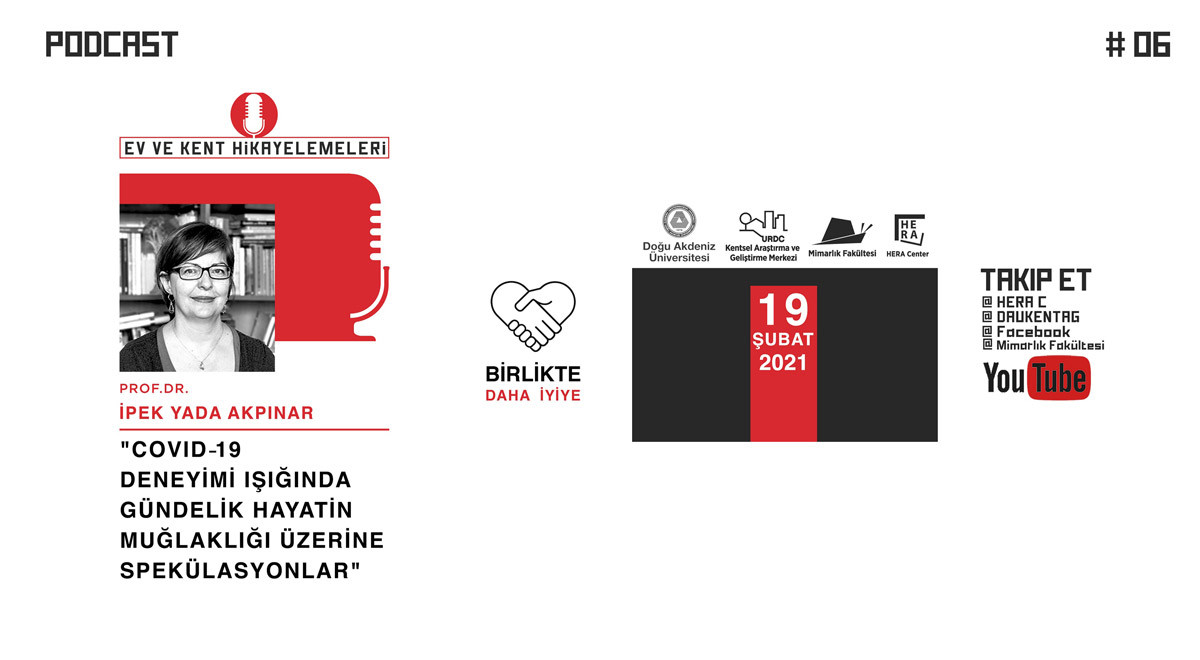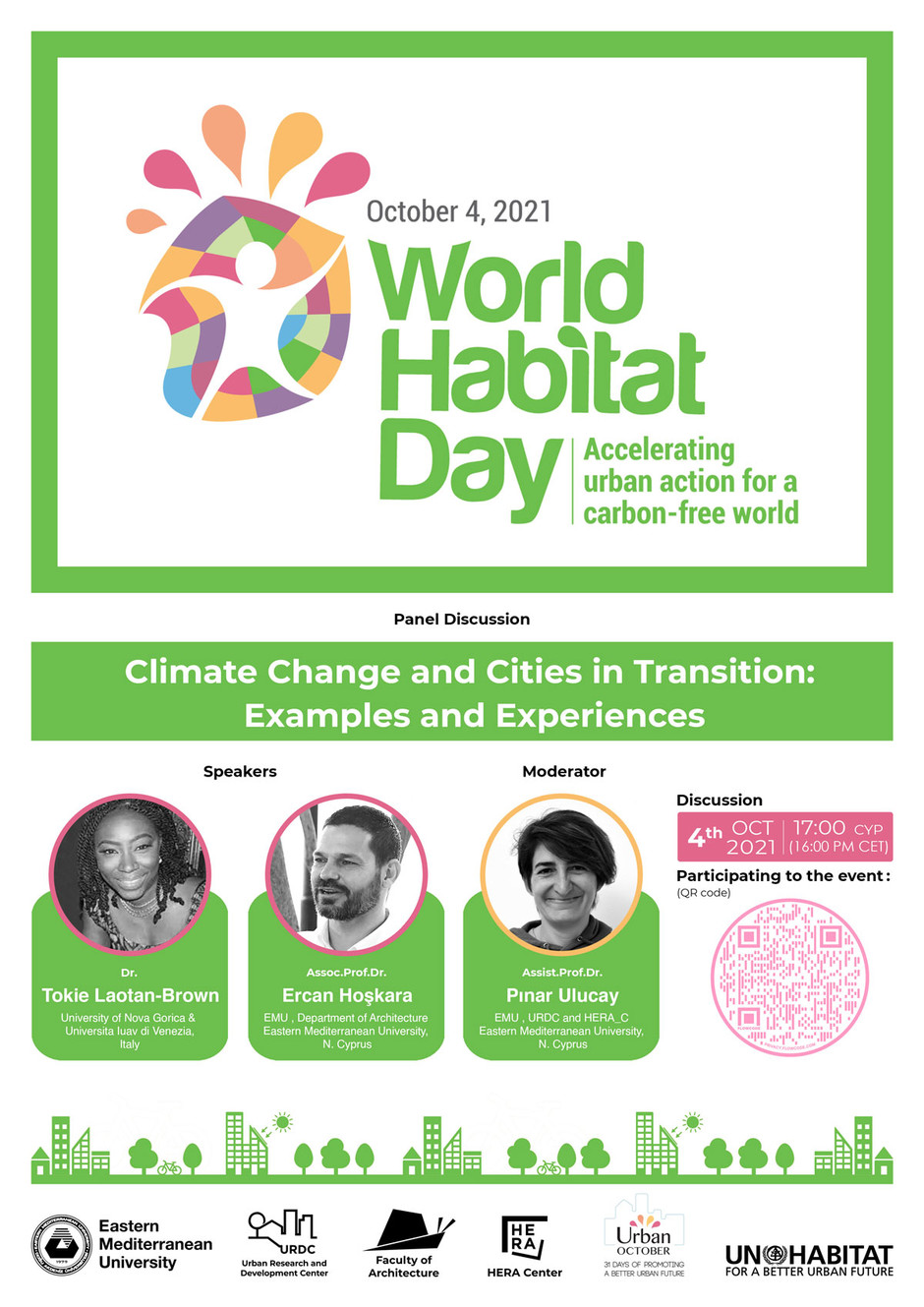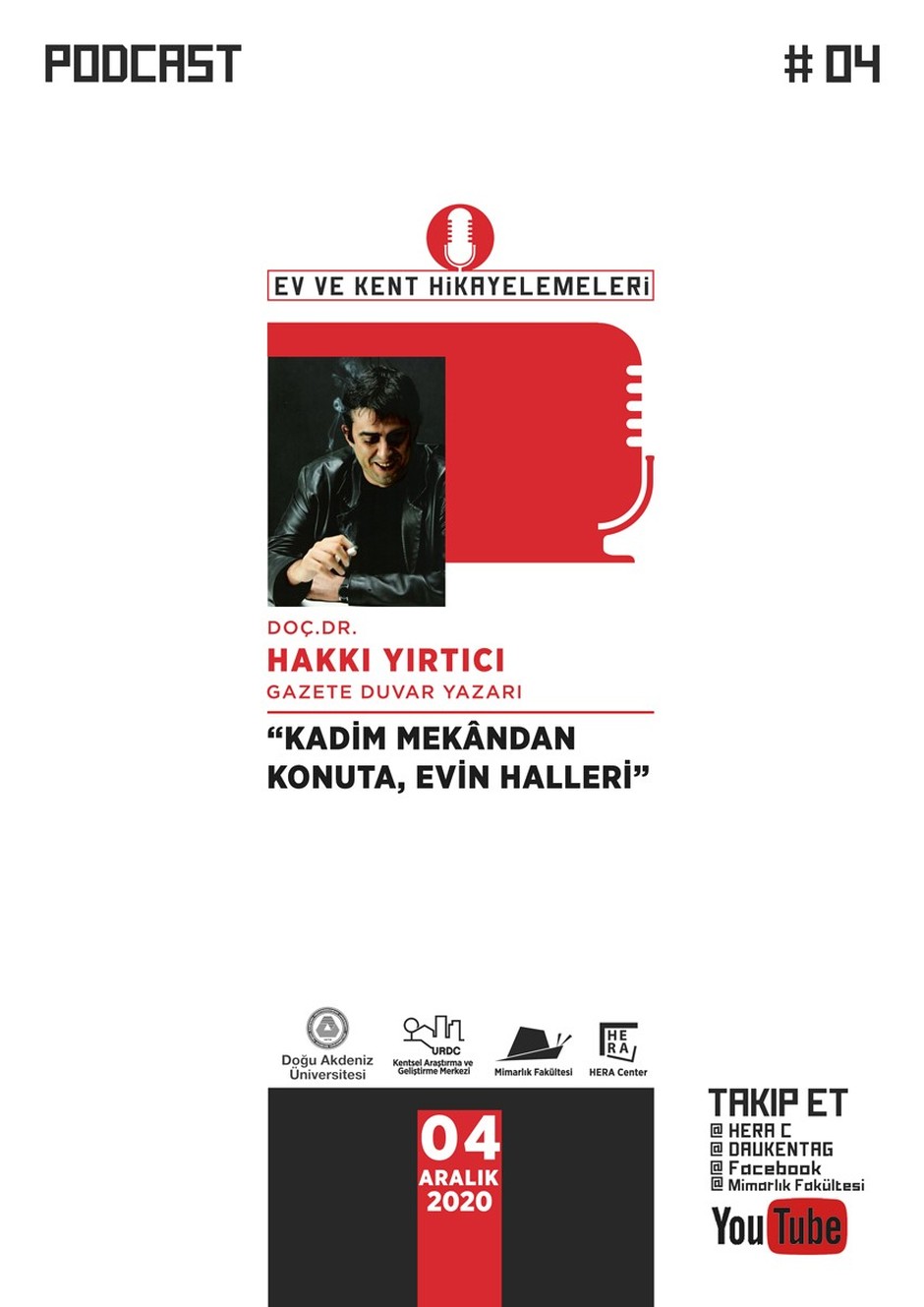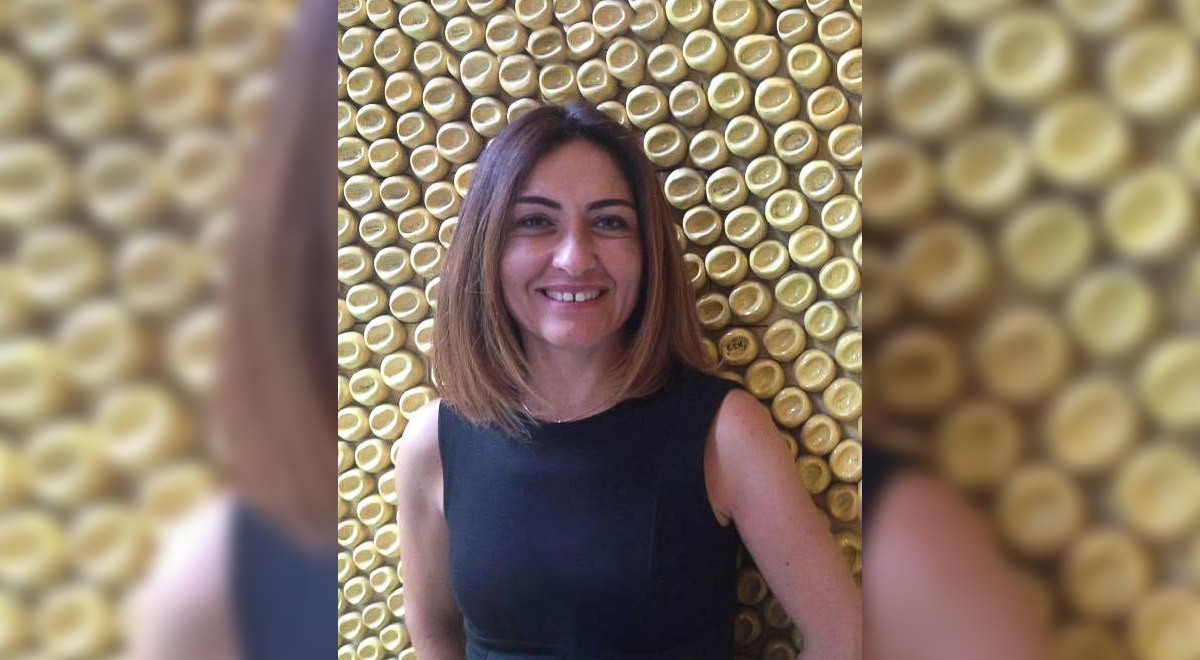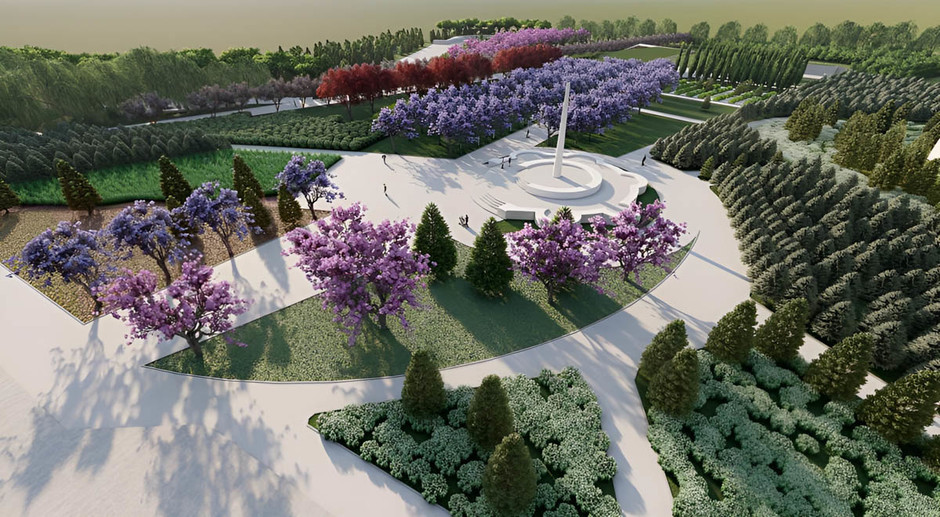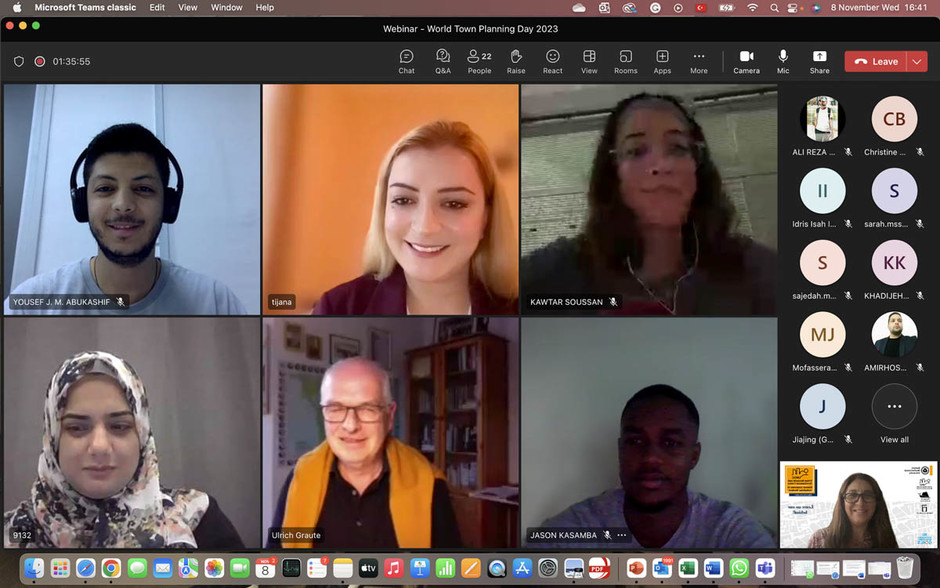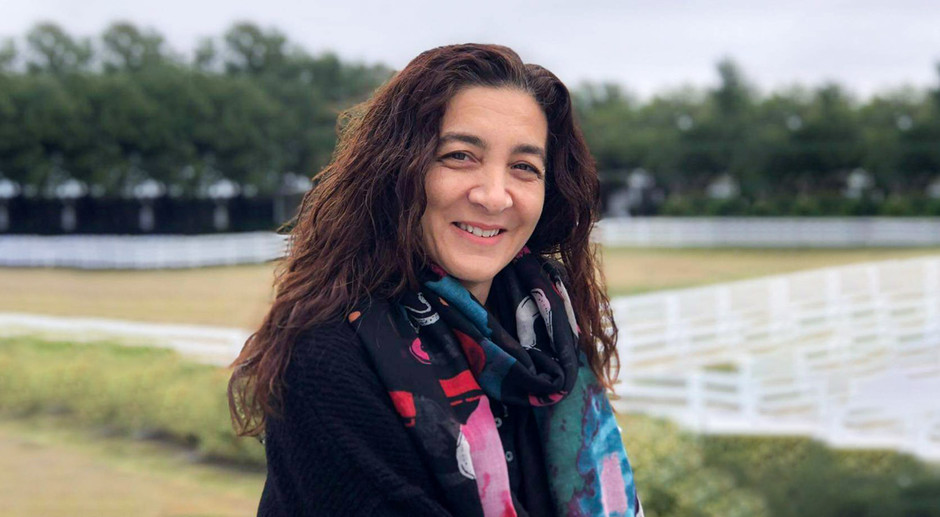Eastern Mediterranean University Faculty of Architecture Housing, Education, Research and Advisory Center (EMU HERA) and EMU Urban Research and Development Center (EMU URDC) jointly organized the 6th of the podcast series "Storyboarding the Home and the City". The said series hosted the audio presentation of academician Prof. Dr. İpek Yada Akpınar titled "Speculations on the Ambiguity of Everyday Life in the Light of the COVID-19 Experience". Prof. Dr. Akpınar's presentation can be watched on EMU Faculty of Architecture's youtube channel at the link: https://youtu.be/p2XhqDa7aZk.
"We Are Faced With Late Capitalist Amnesia"
Drawing attention to the fact that in the last 10 years, the concepts frequently asked and brought to the agenda in doctoral dissertations are to remember, forget and daily life, Prof. Dr. Akpınar reconsidered these concepts in her presentation. Prof. Dr. Akpınar made the following statements in her presentation:
I would like to ask what drives our passion to remember and recall. Is it the fear of forgetting or anxiety about the future? Are we in a fear or even terror of forgetting under the information bombardment? Under this fear of forgetting, we develop new strategies with the psychology of survival. We create new public places, new spaces and rituals. We are witnessing a radical change and transformation in our memory forms. The only reason for this is not sociocultural. Fixed social and group memory moves away from responding to current dynamics and contradictions. Are we going to think of individual, generational or collective (public) memory as carriers of all forms of memory? In multilingual and multi-layered urban environments, the foundations of consensus and common ties are blurred. Our collective memories are actually in the process of differentiation. Representations; There is no way to think separately from the commodification processes, their strategies and of course the context in which they are staged. There is also talk of a memory explosion. We are faced with late capitalist amnesia. We use and instrumentalize the past for commercial and touristic purposes on one hand, and for political purposes on the other. "
“Permanence Is Not The Most Enduring Feature Of The Modern World"
On top of that, the prolonged COVID-19 process, the earthquakes we experience at the same time, natural disasters, troubles, our confrontation with climate change, the troubles in our daily economic life, and the uncertainty about the future further increase the uncertainities about the future. A fast life with an increasing momentum. On the one hand, we are at home, life is very slow. But on the other hand, there is a very accelerating tempo. The most permanent feature of the modern world is actually not permanence; it is transience, change and radical transformation. This accelerated transformation actually shattered the fine and straight linearity that traditionally ties the present and the future to the past. We do not know how the future will take shape or what form it will take. Solid space, everything evaporates. We also want to protect the past in some way. There is a world we lost. Our relationship with the past is not that good anymore. So how can we set up an improvement process? How can we look into the future? How can we achieve an even more critical remembrance of a common future? How do we design a common future with our architecture profession?
I have three approaches. The first is to look at context. No encounter is possible without looking at the context. The second is to be able to look at all layers of history and all social actors without excluding any element and social actor. In short, walking around in the gray zone. The third is to construct a new design and research approach and processes with a new language. "
"Free City, Open City, Democratic City"
“How is it possible to have an urban design process that does not exclude human-specific experiential features? Is it possible to develop a holistic approach and reading with the new alphabet, new language, alternative perspectives and tactics? Can one move towards a new design guide from the set of universal social spaces criteria? Can design codes and management of urban space be done with a pluralist and evolutionist open fiction? In the approach to design; why don’t we accept that the priority is in human, pluralism? Pluralism instead of the majority is an approach that targets multiplicity. Space, experience and people-oriented perspective and representation. In short, an unexpected surprise is a design process that allows the emergence of the heterotopic hybrid space and the management process of the new public space in an open and transparent way. How can new publicities be designed for a humanitarian square, a humanitarian city? I think demanding view is the clearest answer to this. Free city, open city, democratic city. Participatory design process, participation and transparent process in public space decisions. Reading suggestions for pluralistic and flexible alternatives. Of course, we come across the most ideal of this in projects, especially in student idea projects and competitions. The most extraordinary and idealistic environments for producing new alternatives, new words and new approaches.
We may have new keywords for new conflicts, contradictions, ambiguities and transparencies, polyphony competitions and encounters in everyday life.

